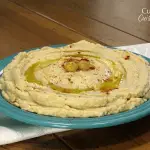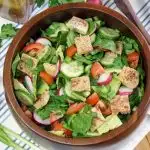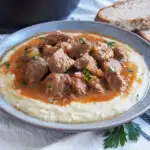Alawi msabbaha is a creamy yogurt and potato dip similar to hummus that comes from the Alawite people living near the border of Lebanon and Israel.
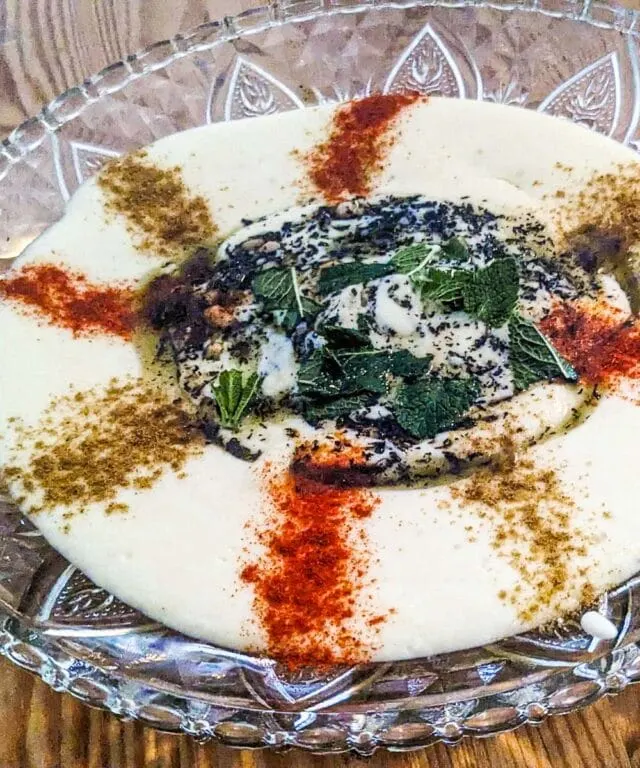
I LOVE HUMMUS. Its creamy and rich texture, with that drizzle of olive oil on top — it is my favourite way to start my day (yes, hummus is traditionally a breakfast dish).
But hummus is a part of a larger family of dishes, and today I would like to introduce you to hummus’ “cousin” – the Msabbaha.
I will also tell you a bit about the Alawites, one of the most unique communities in the Middle East – stay tuned!
Hummus in the ancient world
Since the cradle of civilization, the people of the Levant have been relying on legumes as a daily source of protein and nutrients. Meat was expensive. Chickpeas, fava beans, lentils, and many other legumes have been consumed in the form of a creamy pulse or paste since Biblical times.
“And at meal-time Boaz said unto her, ‘Come hither, and eat of the bread, and dip thy morsel in the Hometz” (Ruth 2-14). The ancient Hebrew word hometz is believed by some researchers to relate to the modern-day hummus.
Msabbaha is, one might say, a variation of hummus. Instead of blending chickpeas and tahini together into a fine paste, the chickpeas are roughly crushed in a mortar and the tahini is later added as thickener.
(Take a look at our article on hummus msabbaha for more details on this dish and a recipe.)
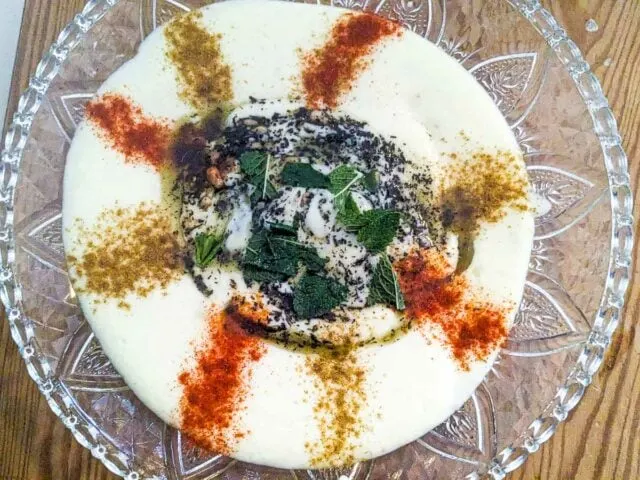
The Alawites
Now, I would like to take you on a trip to the Golan Heights, just a few kilometers from the Israeli-Lebanese border.
Within a demilitarized zone (DMZ) separating the two countries, lies a village called Ghajar. Ghajar is populated by around 2000 people. All of them are neither Lebanese nor Israeli by their ethnicity. (They do hold Israeli citizenship, however.) They are the Alawites, who made their way south from northern Syria decades ago.
The Alawites are a religious and ethnic group that believe in a modified form of Shi’ite Islam, and praise one of Muhammed’s companions, Ali Ibn Abi Talib.
Ghajar is a beautiful village, surrounded by stunning green mountains. The people there, who are so welcoming, introduced me to Northern Syrian cuisine for the first time. What an experience it was!
One of the most noticeable characteristics of the cuisine is the frequent usage of dairy products. Two of my favorites were fermenting cheese with local herbs and cooking lamb in a luscious yogurt sauce.
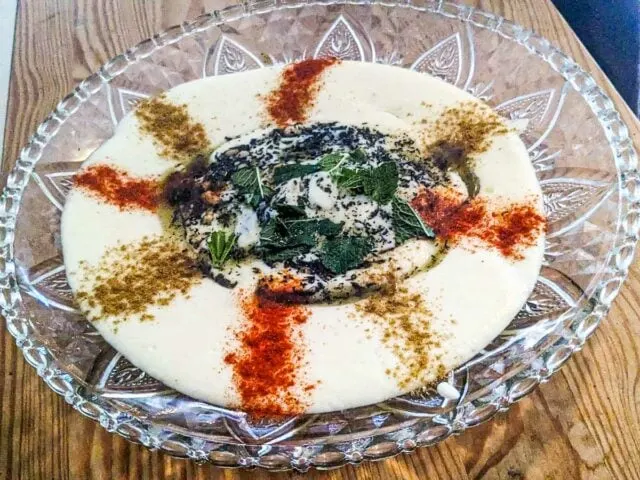
What is Alawi msabbaha – potato hummus?
Alawi msabbaha is unique to their cuisine. Instead of chickpeas, which you find in more traditional msabbaha recipes, they use potatoes. And most interestingly, the tahini found in most hummus recipes they substitute with yogurt.
Instead of pouring olive oil on top (like you would find for traditional hummus or msabbaha), the Alawites infuse Samne, Middle Eastern clarified butter, with nuts and herbs. This adds an incredible aroma to the dish.
I, personally, prefer my Alawi msabbaha creamier and runnier, more similar to a potato hummus. But, you do you! The level of creaminess (and spiciness) is up to your preference. Play around with the amount of yogurt and herbs in this recipe to find what best suits your tastes.
This dish is perfect as an afternoon snack or as a meze. I highly recommend that you eat it scooped with flatbread. That’s where the magic happens.
Alawi Msabbaha
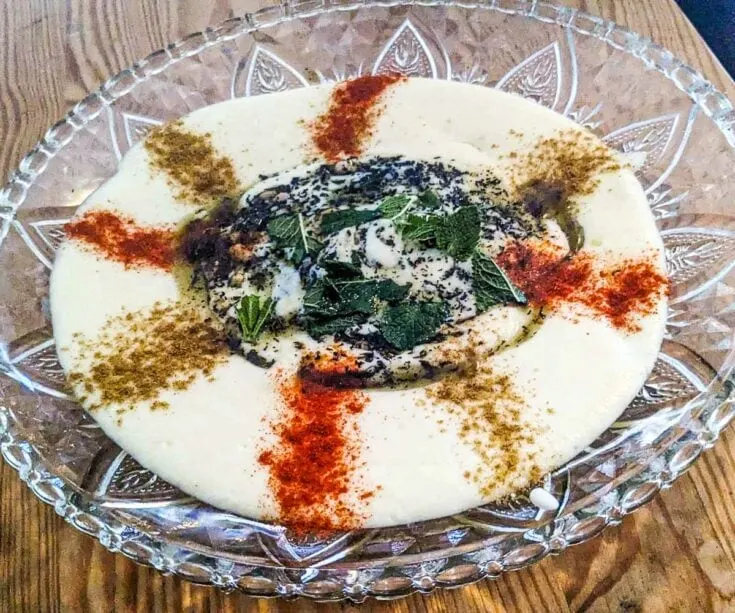
Alawi msabbaha is a creamy yogurt and potato dip similar to hummus that comes from the Alawite people living near the border of Lebanon and Israel.
Ingredients
- 1 medium-sized potato, boiled and peeled
- 1/2 cup yogurt, 3-4% fat
- 1 garlic clove, chopped
- 1 Tbsp lemon juice
- Salt, to taste
- 1 Tbsp clarified butter*
- 2 tsp dried mint
- 1 Tbsp pine nuts (optional)
- Fresh mint leaves, for garnish
- Cumin powder, for garnish
- Paprika powder, for garnish
Instructions
- Blend the cooked potatoes, yogurt, garlic, and lemon juice together. You can use either a blender or a potato masher.
- After the mixture is homogeneous, add salt to taste.
- Heat the clarified butter in a saucepan. Once it reaches medium heat, turn off the stove and add the dried mint and pine nuts. Leave it for 30 seconds to infuse.
- Plate your potato-yogurt msabbaha (see a plating suggestion in the pictures above).
- Pour the infused clarified butter on top of the plate.
- Garnish with fresh mint leaves, cumin powder, and paprika powder.
- Serve it alongside some warm flatbread. Enjoy!
Notes
*To clarify butter: Melt butter over medium heat until you notice the solids separate, about 10-15 minutes if clarifying 1/2 lb of butter. Let the butter stand for 5 minutes. Then, strain the butter through a few layers of cheesecloth. The foam and solids should stay behind, and you should be left with clarified butter that can be stored in the refrigerator for up to 6 months.
Nutrition Information:
Yield:
1Amount Per Serving: Calories: 388
If you liked this recipe, here are some similar dishes you may enjoy!

